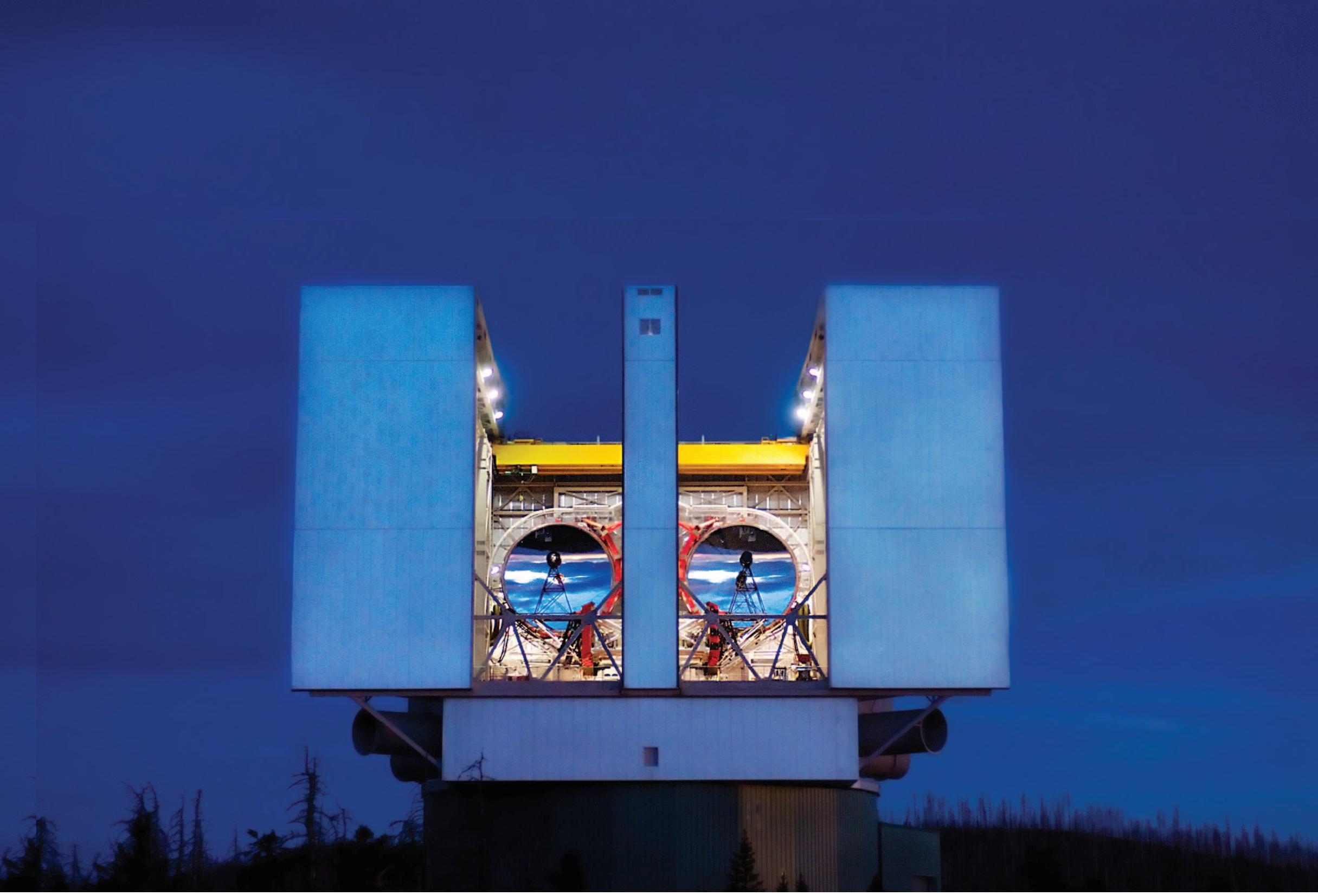
The first telescopes used lenses to form images but their performance was limited by chromatic aberration. Important developments in telescope technology include the use of parabolic mirrors with highly reflecting surfaces. Their operation can be explained using ray diagrams.
Optical telescopes have been used for over 400 years and have enabled us to look at the universe in ever-increasing detail. Such telescopes continue to be developed, especially the very large astronomical telescopes that are used to examine the evolution and structure of the universe. The latest state-of-the-art instrument is the LBT — the large binocular telescope — built on the top of Mount Graham in Arizona at a height of 3000 metres (Figure 1). With its twin 8.4-metre-diameter mirrors and weighing 580 tonnes, it is truly enormous. However, its design depends heavily upon successful telescopes of the past, going all the way back to Galileo, 400 years ago. It is interesting to look at the development of optical telescopes over the last four centuries and to pick out the breakthroughs in design that have culminated in the impressive LBT. This is the first of two articles on telescope development that takes us from Galileo to the Mount Palomar 200-inch telescope.
Your organisation does not have access to this article.
Sign up today to give your students the edge they need to achieve their best grades with subject expertise
Subscribe




